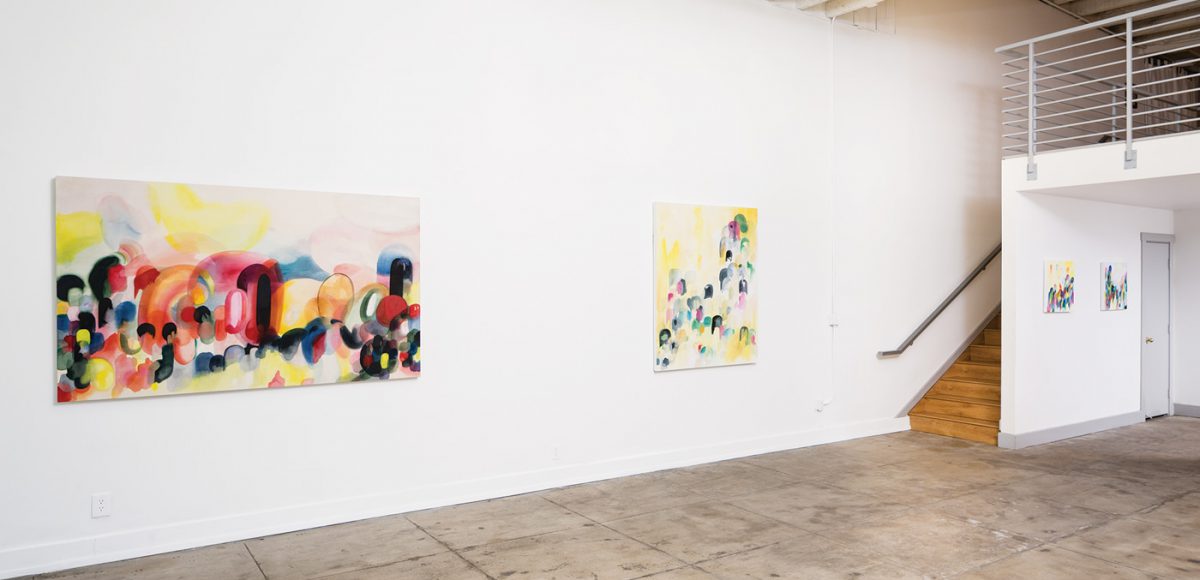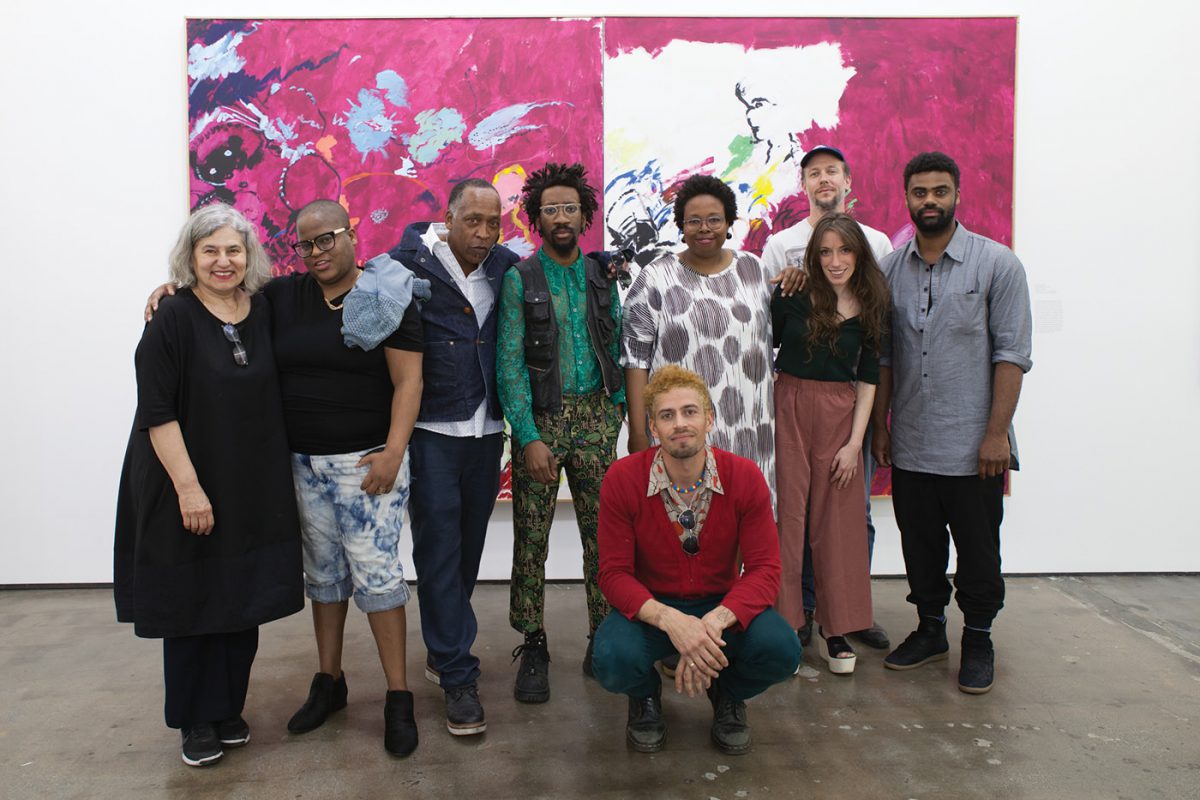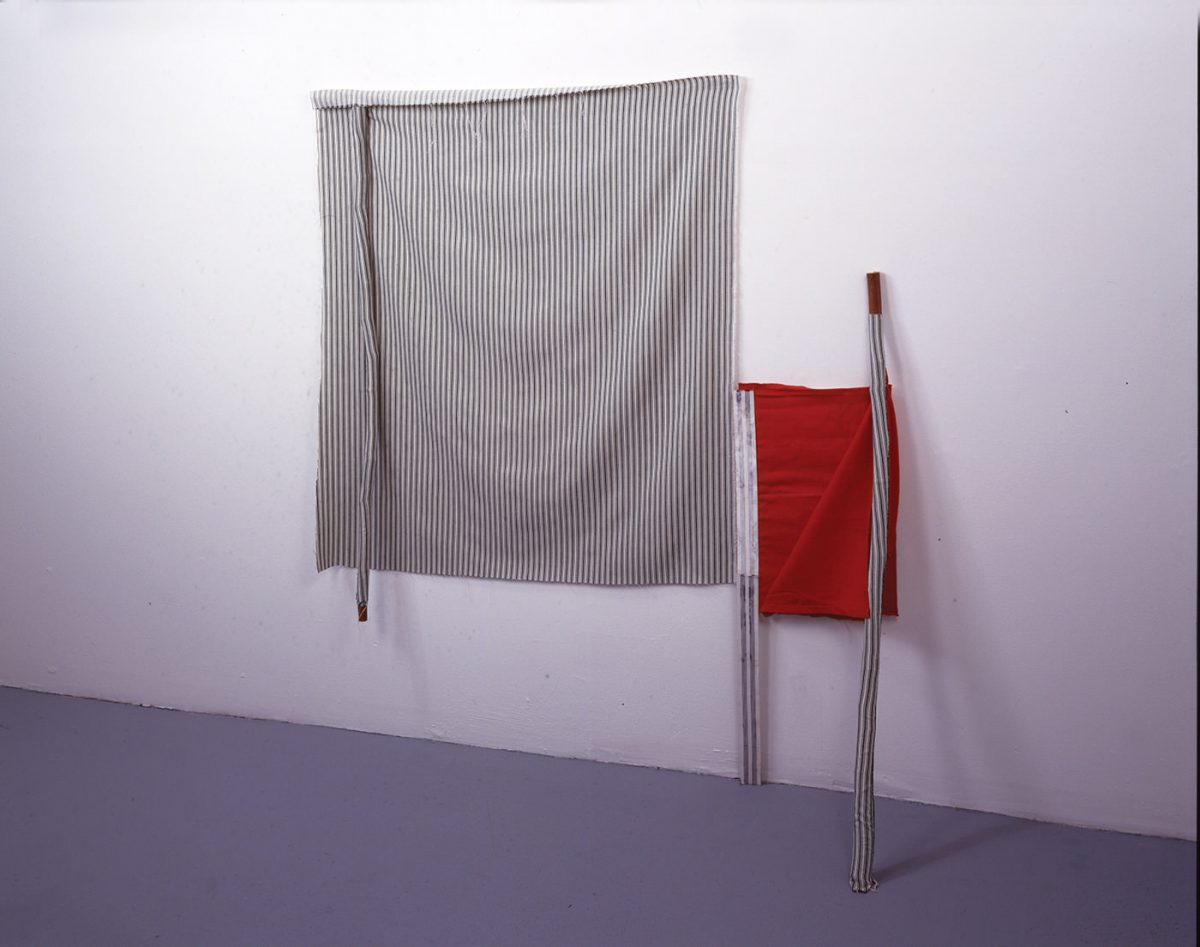Stephanie Pryor’s new paintings are technically abstract, but in truth, exist along the border of abstraction and representation, a liminal area Pryor is especially adept at navigating. Though these luminous, strange and engaging pictures follow conventions of landscape, her palette is too intense and distinctive to be exactly natural. This tethers them to an abstract practice through artifice, despite legible references to landscape reinforced in the titles—Sunbeam, Kissyface, Birds’ Nest, Elm, Centennial Pond, Forest Echo and so on. In fact, both images and words directly reference a recent series of landscapes, explicitly depicting a wooded area familiar from her childhood. Pryor’s previous portrait-based works derived their power from the flirty threat of abstractionist incursion into the domain of imagery, specifically clothing and flesh, through the same operations of color wash and diaphanous layering evident in these new non-objective works. The inverse but not the opposite of that dynamic, the results in Reverie are not all that different, whether her figures dissolve into abstraction; or her abstractions create moments of object and story.
In geological tumult, meteorological atmosphere, shifting focal plane, low centers of gravity evoking horizons and territories of empty space evoking sky, the gestalt of the Reverie paintings is almost organic. Yet these careful studies in perception candidly display evidence of constant consideration, revision, addition, resolution. A single shape, stroke or gesture might start as underpainting and resolve as overpainting in an adjacent passage. Pryor deploys microglitter in the pigments—with admirable restraint considering its delightfulness—triggering real optical action, pausing the eye, then setting it back into a different kind of motion. Once you see some glitter you look for more, and this closer scrutiny of the entire composition yields all kinds of other rewarding details. Pryor’s stylistic process is tautological in the most dynamic, generous sense, as she’s been consciously working both sides of the abstract/objective divide for years. Except with Pryor, it’s not a divide, it’s a continuum.









